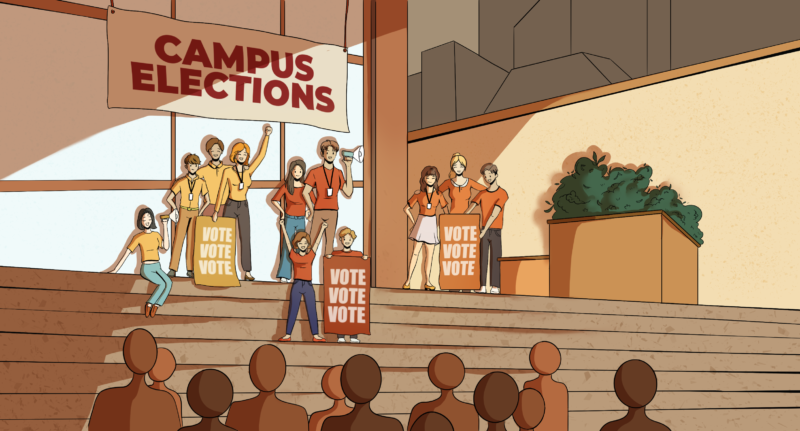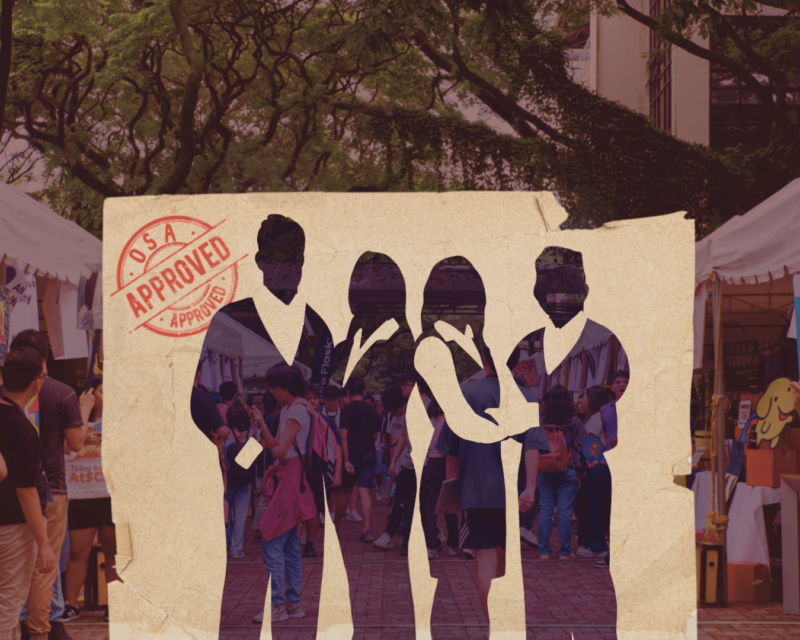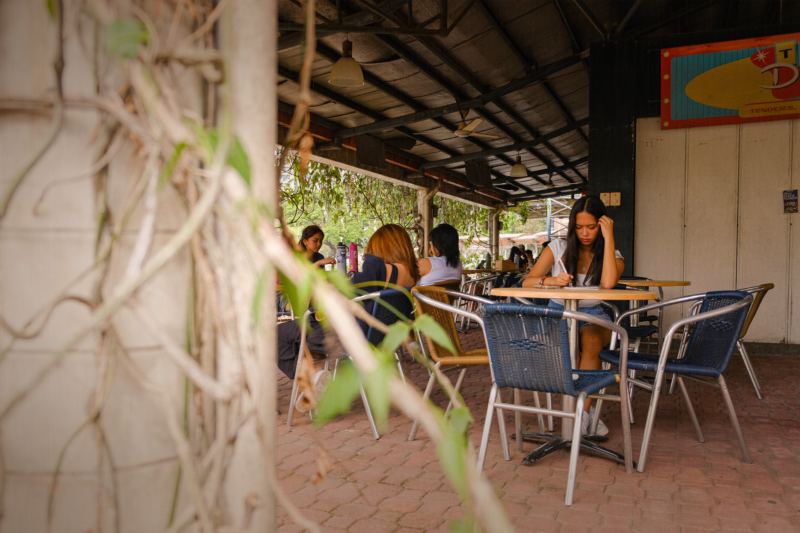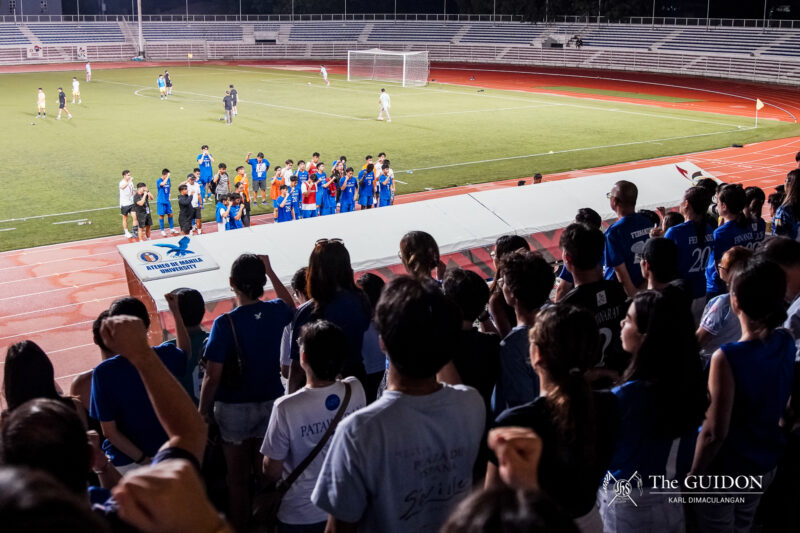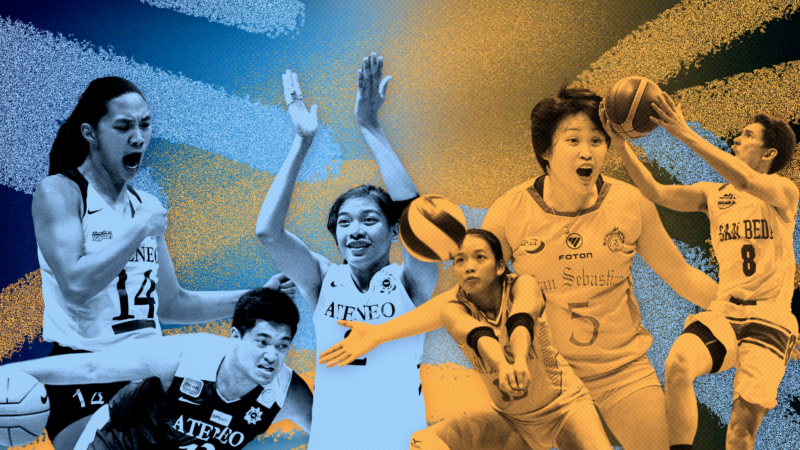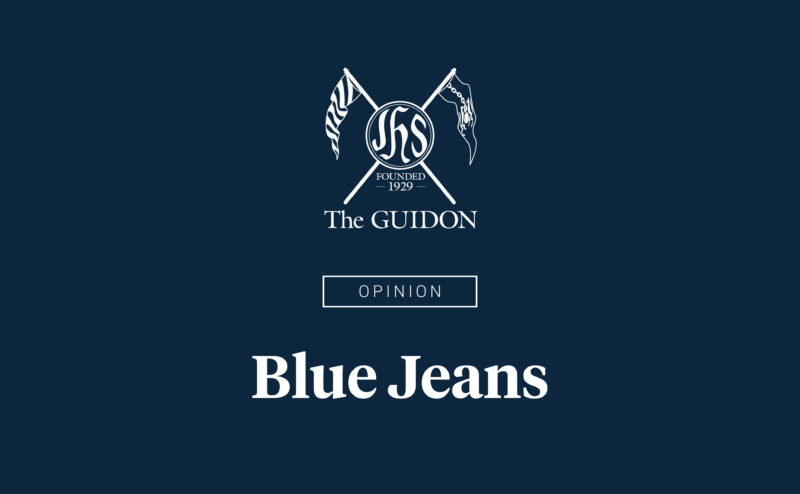It was the third week of September. The sound of the final whistle, the beating of the drums, and the cheers of the euphoric crowd enveloped the Araneta Coliseum. When the final buzzer was blown, the collegiate basketball season officially ended, with the Ateneo Blue Eagles crowned the kings of this season’s University Athletics Association of the Philippines (UAAP).
For schools like the Ateneo, pressure to win the trophy has been a constant. The quest to become the champion is further hyped up with school rivalries, like the long-standing Ateneo and La Salle feud. It is also fuelled by the large amounts of money donated by the alumni of some schools for the basketball players’ training and development.
And with all this pressure, some schools seem to have gone farther than they should. Several collegiate sports controversies have been exposed over the years. Becoming champion has become synonymous to recruiting ineligible players and making adjustments with admission requirements, among other practices.
The “winningest” team
In total, the Ateneo has 18 men’s basketball championships, 14 of which came from the National Collegiate Athletic Association (NCAA). For 79 years, the Ateneo held the distinction of being the “winningest” team in NCAA history, until the Letran Knights broke the record in 2003 when it won its 15th basketball crown.
The school’s basketball-winning ways started in 1928, when it won its first NCAA championship. It would win five more trophies, eventually ending its streak with the 1941 championship. The NCAA games were then suspended for the next six years, with the onset of World War II.
In the 1950s, the Ateneo Blue Eagles and San Beda Red Lions would often play against each other in the finals. It was at this time when players like Ignacio Ramos and Luis “Moro” Lorenzo helped Ateneo win its first post-war championship. The Ateneo would win eight more championships, the final one in 1978.
However, the team withdrew from the NCAA in favor of the UAAP because of the growing violence. At this time, students rioted against rival schools and teams cheated rampantly, diminishing NCAA’s appeal and credibility.
Dominant as the Blue and White was in the old league, things would prove to be different in the UAAP.
The Ateneo’s first UAAP championship came in 1987 when the Blue Eagles caught up and won over the University of the East Red Warriors despite the latter’s 20-point lead. The following year, the team championed again, this time beating rivals De La Salle Green Archers.
But in the 1990s, the Ateneo was unable to reclaim its championship, let alone qualify for the Final Four. During this time, the University of Santo Tomas, De La Salle University, and, at times, the Far Eastern University became the primary contenders for the title.
Then, after a 14-year drought, the Blue Eagles returned the trophy to Ateneo when it became champion in 2002 and, more recently, this year. Ateneo defeated archrival La Salle in both instances.
Compromises
But sometimes, winning a basketball championship could mean a student-athlete compromising the “student” part of the equation.
As early as 1969, the Ateneo set the trend in recruiting potential athletes from other institutions. Before the Ateneo, colleges and universities usually recruited players from their high school departments or sister schools. In 1969, Ateneo recruited players Ricardo “Joy” Cleofas and Marte Samson of Caloocan High School. Though these players helped the Ateneo become champion that year, they were declared ineligible the following year because of their failing grades. This then led the school to review its athlete recruitment program, only accepting athletes that could survive the academic requirements.
The Ateneo isn’t the only school caught up in basketball fever. Fast forward to recent times, the National Bureau of Investigation (NBI) arrested De La Salle University-College of St. Benilde (CSB) player Paolo Orbeta of the NCAA for alleged point shaving. He promised CSB student and bettor Wilfred Uy that his team would lose because he’d only score 11 points during the entire game. This convinced Uy to bet P1 million on the San Sebastian Stags, CSB’s opponent at that time. The agreement didn’t materialize, however, which led Uy to call the NBI after being threatened by Orbeta and his group.
Ineligibility scandals also rocked the UAAP. In 1994, Adamson University was suspended for a year for fielding in Marlou Aquino. Aquino was found to have taken less than the required number of academic units for a player to be eligible to play in the UAAP. Almost a decade later, De La Salle was suspended for allowing two ineligible Archers to play during the 2003-2004 season.
Meanwhile, according to the Philippine Center for Investigative Journalism’s (PCIJ’s) article entitled “The Pressures and Perks of Being a UAAP Star Athlete,” certain schools in both the UAAP and NCAA have special acceptance measures for student-athletes with potential. With help from its athletics officials, a certain UAAP-participating school allows students to appeal for their admission if they fail the entrance requirements. In this appeals process, the said school is reported to admit about 40 students, 10 of whom are student-athletes.
In the Ateneo’s case, the University Athletics Office (UAO) handles and helps out in the athletes’ appealing process. This is true in LA Tenorio’s (AB IS ’06) case, whose appeal, according to PCIJ, was reconsidered by UAO.
There is also a school that allows its students to appeal for admission to a “less competitive major.” This is if they fail to make the grade in the program they already chose. Among those who take part in this appeals process are student-athletes, who are duly assisted by the school’s athletics office.
Making adjustments
Because of these compromises, schools and their athletes are subjected to great pressure to succeed or, sometimes, to bend the rules.
In the Ateneo’s case, the pressure is definitely immense. “They’re playing for a high profile team, one of the most popular collegiate teams in the country with a high profile coach, with high profile alumni supporting them, [and it’s] a high profile school,” says Ramon Cualoping III (AB Comm ’04), founder of the Animo Ateneo online forum. The forum has become a place where students and alumni can chat about Ateneo-related topics.
In these cases, he believes that it is often necessary to make certain adjustments, which vary from getting a “less competitive major” to having a tutor. A successful recruitment program would be hard to maintain if coupled with strict academic standards. In fact, other schools have also been doing the same thing.
The University of the Philippines, for example, has the Varsity Athletic Admission System (VAAS). Exceptional athletes and dancers who did not pass or take the UPCAT are awarded slots if they pass the VAAS’ strict tryouts. According to PCIJ, the system also involves signing a four-year contract to play as a UP student-athlete.
A challenge
While many might find the issue of adjusting the athletes’ academic standards disturbing, Cualoping sees this as a challenge for the school. With a certain percentage of student-athletes having difficulty in adjusting to the rigors of the Atenean education, it becomes a challenge for the school to provide them holistic education. “We try to develop him… and once he graduates, he’ll be [hopefully] a total person, an Atenean,” Cualoping says.
Psychology Department Lecturer and Ateneo Sports Psychologist Ma. Luisa Adviento believes that the Ateneo’s players should be considered students first before athletes.
“While we highlight their athletic abilities, the reality is that they really have to go to school daily. They have to submit their requirements.”
According to Adviento, the most that student-athletes can get is that the schoolwork they miss will be accepted at a later date.
They would also have to conform to the Ateneo’s exam schedule. In the case of the UAAP basketball tournament, its finals usually take place on the same week as the Ateneo’s first semester final exams.
Although the UAAP men’s basketball season remains popular, there’s already an effort to lessen the esteem given to the teams. For example, the Blue Eagles usually don’t celebrate and eat out anymore, even when they win a particular game. This is unlike before, when the Ateneo’s alumni would treat the team to dinner after each game.
“[We] really made a big thing out of it,” shares Adviento. “Now, no more…After the game, [the players] are asked to go home, to study or be with their families.
“No more overcelebration.”
Adviento says that a combination of such factors, limiting celebrations and enforcing the Ateneo’s academic standards, is a means by which the student-athletes are made to focus toward their other goals.
“It’s a way of structuring their student lives to their academic lives so that they’re not carried away by the pressure or [be] intoxicated with a win,” says Adviento.
The true championship
While there is intense external pressure on the schools, particularly their student-athletes, the challenge to become champion actually rests more on surpassing internal barriers.
Adviento shares that pressure from the other competing schools, alumni, the student body, academics, and other supporters can’t be controlled because it’s always a given. For the student-athlete, conquering one’s own limits would lead to conquering those outside.
“Once they realize that the only thing they can control is their mind and themselves, then they will really focus on what they can do,” says Adviento. “What they can do is what will make them win.”
For Cualoping, school pride and spirit remained in play, even when the Blue Eagles didn’t become the champion in past seasons. “[Becoming a champion] helps boost the morale of the people,” he says. “It makes people proud of their school.”
“We haven’t been winning the past six years… [but the] school pride is still there.”
At the end of the day, however, what should be kept in mind as a community is the true value of a championship. According to Adviento, that true championship value goes beyond the trophy, the banner, and the title.
“We must also be reflective of what it is we are targeting the community. Is it simply the championship or the effort and the whole road and journey that leads to the championship?”

